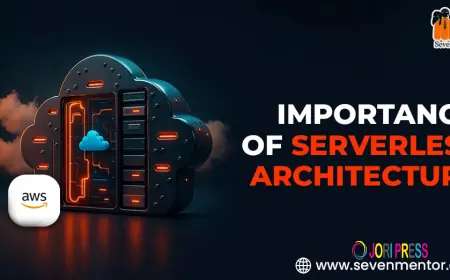The Future of Customer Engagement Solutions: Predictive, Personalized, and Powered by AI
Discover how AI is transforming customer engagement through predictive insights and scalable personalization.
Enterprises are under immense pressure to keep pace with a customer base that has become faster, smarter, and far more selective. Today’s consumers expect seamless, intelligent interactions that feel tailored, relevant, and immediate, regardless of channel or touchpoint. Static engagement models, stitched-together technologies, and outdated CRM strategies are increasingly insufficient to deliver experiences that resonate. What once passed as personalization now feels generic. The challenge is no longer about scaling communication but about scaling precision. Real-time behavioral shifts and growing channel fragmentation have created a chasm between what customers expect and what businesses can deliver. The next generation of customer engagement solutions must bridge this divide through predictive intelligence, adaptive workflows, and enterprise-wide orchestration. For executive leaders, it is no longer about reacting to the customer journey but actively shaping it, with speed, foresight, and contextual sensitivity at scale.
Orchestrating Engagement Across the Entire Enterprise
Customer engagement has historically lived within the walls of marketing departments and service centers. But in the modern enterprise, this boundary no longer exists. Engagement is now a system-wide capability, touching logistics, commerce, product experience, finance, and even supply chain operations. Every function becomes a potential moment of influence. The question is whether those moments are coordinated or disconnected.
Orchestration at scale means connecting more than just systems. It requires aligning intent, behavior, and operational readiness across all customer-facing processes. AI is the engine making this shift viable. With the ability to interpret signals across digital, physical, and human touchpoints, intelligent orchestration ensures that customers experience continuity, not contradiction, regardless of where they engage.
Enterprise-wide orchestration turns each department into a node within a unified engagement engine. Whether it's an offer from sales, an alert from logistics, or an update from support, the tone, timing, and relevance of each interaction are synchronized. This approach reframes customer engagement as an enterprise discipline, not just a communications tactic, and reshapes the organization around the customer journey.
Predictive Intelligence: From Retrospective Reporting to Proactive Impact
The real value of AI in customer engagement lies not in automation but in anticipation. Predictive intelligence brings visibility to what customers are likely to need before they signal it. Enterprises that master this capability redefine the relationship between data and action.
AI models now ingest thousands of data points, from digital behaviors and purchase patterns to sentiment signals and service history, to predict what a customer might want, when they might churn, or what intervention might change the outcome. These insights power real-time engagement strategies that feel timely and intentional, not intrusive or arbitrary.
The application is wide-ranging:
-
Churn prediction models enable retention teams to act before dissatisfaction takes root.
-
Micro-behavior tracking uncovers conversion hesitations, allowing intervention at the right moment.
-
Sentiment and tone analysis inform frontline teams how to modulate tone and channel of engagement.
-
Predictive lead scoring prioritizes outreach based on future value, not just past interactions.
What emerges is a shift from backward-looking metrics to forward-leaning strategy. This evolution not only strengthens customer satisfaction and loyalty but directly supports top-line growth and operational efficiency. Predictive intelligence doesn’t replace the human touch; it refines where and how it's applied for maximum impact.
Hyper-Personalization at Scale: Designing for Precision, Not Just Reach
The age of segmentation is yielding to the era of moment-by-moment personalization. Customers no longer respond to broad demographic targeting or static content trees. What they expect is engagement that feels uniquely attuned to their evolving preferences, context, and intent.
To deliver this kind of precision, enterprises are rearchitecting around AI-powered personalization frameworks. These systems analyze not just who the customer is, but how they behave, what they value, and how those variables shift across time and channel.
In commerce, this means surfacing the right offer at the exact moment of hesitation. In healthcare, it translates into personalized wellness journeys with proactive outreach. In financial services, it manifests as hyper-relevant insights aligned with individual financial goals. Each industry is finding that personalization is no longer a “feature”; it is the experience.
The difference lies in the design. Adaptive workflows that update in real time, contextual memory that persists across channels, and automation engines that act with nuance all combine to create truly dynamic engagement. At scale, this capability drives revenue, improves retention, and fortifies the enterprise’s competitive advantage.
Rethinking Engagement as a Revenue Strategy
Customer engagement is no longer a functional initiative. It is a board-level priority that directly shapes growth trajectories, margin optimization, and market resilience. For executives, this shift demands a new lens, not one that asks how well systems perform in isolation, but how effectively they converge to create outcomes that matter.
In this context, customer engagement solutions become strategic infrastructure. They are not tools to be delegated, but ecosystems to be governed with executive oversight. When properly orchestrated, these systems convert behavioral insight into revenue action, and touchpoint efficiency into relationship capital.
C-suite leaders must now ask: Are we enabling real-time engagement or just facilitating transactions? Is our engagement strategy truly predictive and contextual, or reactive and templated? Do we have the cultural and operational readiness to scale personalization intelligently?
The answers to these questions will determine the pace and sustainability of enterprise growth. For those ready to lead this transformation, the opportunity is profound: deeper customer trust, higher lifetime value, and a competitive edge built not on campaigns, but on connection.
What's Your Reaction?
 Like
0
Like
0
 Dislike
0
Dislike
0
 Love
0
Love
0
 Funny
0
Funny
0
 Angry
0
Angry
0
 Sad
0
Sad
0
 Wow
0
Wow
0



















































